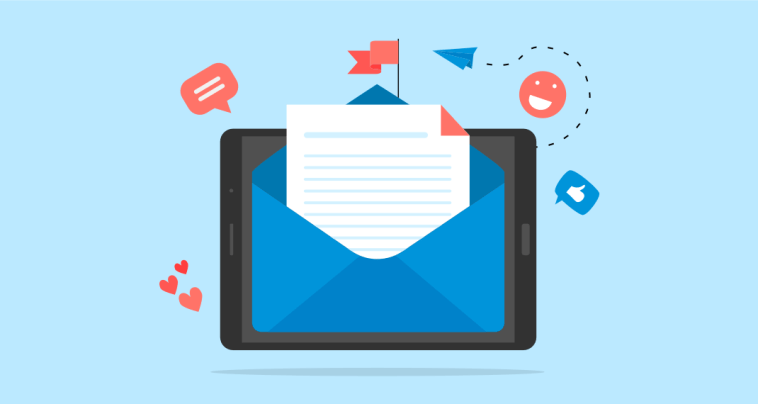Introduction.
If you’ve ever been tasked with running an email marketing campaign, you know how powerful emails can be.
They’re direct, personal, and can yield impressive returns on investment. In fact, research has shown that email marketing offers an ROI of $42 for every $1 spent, making it one of the most effective marketing strategies out there.
But here’s the thing: getting email marketing right isn’t just about sending messages; it’s about crafting them well. And this is where email marketing templates come into play.
Email templates aren’t just convenient—they can be game-changers. They simplify the entire emailing process, keep your branding consistent, and make sure that every email you send is polished and professional.
But there’s more to templates than meets the eye. Whether you’re a small business owner looking to make a big impression or a seasoned marketer aiming to increase conversions, understanding how to create effective email templates is crucial.
So, how do you make templates that don’t just look good but also engage and convert your readers?
In this comprehensive guide, I’ll walk you through everything you need to know, from the benefits of using email templates to common mistakes to avoid.
By the end of this article, you’ll be equipped to create email templates that make your campaigns more efficient and impactful.
Why Email Marketing Templates Matter
You might be wondering why templates deserve so much attention. Let’s break it down:
- Efficiency: Writing emails from scratch every time can be a time sink. Templates speed things up by giving you a foundation you can tweak and tailor, so you’re not starting from zero each time.
- Consistency: Consistent branding and tone are crucial for brand recognition. Templates ensure your logos, fonts, and style remain the same across your campaigns.
- Scalability: If you’re scaling up your email marketing efforts or running multiple campaigns simultaneously, having ready-to-use templates makes it easier to manage.
What Goes Into a Great Email Template?
Before I go into the nitty-gritty of building templates, let’s cover the essential elements that make up an effective one.
- Subject Line and Preheader Text: These are the first things your audience will see. A great subject line captures attention, while the preheader offers a sneak peek at what’s inside.
- Header: The header is usually the email’s first image or text, and it sets the stage for the rest of the content. Make it visually appealing and relevant to your message.
- Body Content: This is the meat of your email. Keep the copy concise, engaging, and valuable. Use bullet points, short paragraphs, and headings to make it scannable.
- Call to Action (CTA): Your email’s main goal is often tied to a single action, like clicking a link or making a purchase. Make your CTA clear, direct, and visually distinct.
- Footer: Don’t underestimate your footer. It’s a great place to add unsubscribe links, contact information, or social media icons, ensuring you remain compliant and accessible.
How Do I Create Email Marketing Templates That Drive Results?
Now that the components are clear, let’s go step by step into creating an effective email template.
1. Choose a Template Tool.
Popular platforms like Mailchimp, Constant Contact, and HubSpot offer user-friendly template builders. Pick one that works well with your goals and budget.
2. Design for Mobile First.
With over half of emails being opened on mobile devices, ensuring your templates are mobile-friendly is non-negotiable. Use responsive designs that look good on any device.
3. Stick to Your Brand Guidelines.
Use your brand’s colors, fonts, and voice consistently throughout your templates. This strengthens brand identity and makes your emails instantly recognizable.
4. Focus on Readability.
No one wants to read a wall of text. Use white space wisely, break up long paragraphs, and make sure your font sizes are easy to read.
5. Add Personalization.
Personalized emails have a 29% higher open rate. Incorporate placeholders for names, locations, or past purchase details to make your emails feel more human and less generic.
6. Test Before You Send.
Always send a test email to yourself and colleagues. Check for broken links, formatting issues, and typos. Also, consider A/B testing different subject lines or CTAs to see what resonates best.
Pros and Cons of Using Email Templates
Using email templates is generally a no-brainer, but they do come with some advantages and disadvantages.
Pros:
- Saves Time: You can quickly adapt templates instead of creating new emails from scratch.
- Maintains Brand Consistency: Keeps your branding uniform across all communications.
- Scalability: Easy to roll out multiple campaigns without sacrificing quality.
Cons:
- Risk of Feeling Generic: If overused or not customized enough, your emails might lose a personal touch.
- Template Limitations: Sometimes, pre-made templates from providers have limited customization options.
- Potential Deliverability Issues: Poorly designed templates can land your emails in the spam folder, so you need to follow best practices.
FAQs
Q: Do I need to know how to code to create an email template?
A: Not necessarily. Most email platforms offer drag-and-drop builders that require no coding skills. However, a bit of HTML knowledge can be helpful for more advanced customization.
Q: How often should I update my templates?
A: It depends on your brand and audience. As a rule of thumb, review your templates every quarter to ensure they’re still effective and relevant.
Q: What’s the best way to personalize email templates?
A: Use the data you have—like names, purchase history, or location. Dynamic content blocks can also help tailor parts of your emails to different segments of your audience.
Q: How can I make sure my emails are mobile-friendly?
A: Use responsive design, avoid large images, and make your CTA buttons easy to tap. Test your emails on multiple devices before sending them out.
Q: Can I reuse templates for different campaigns?
A: Yes! Templates are designed to be reused, but always tweak and optimize them for the specific goals of each campaign.
Conclusion
Crafting effective email marketing templates can elevate your marketing efforts from good to exceptional.
They save you time, ensure brand consistency, and help you scale without sacrificing quality.
But remember, templates are only as good as the strategy and customization you put into them. So, how do you plan to use email templates to optimize your marketing?





GIPHY App Key not set. Please check settings